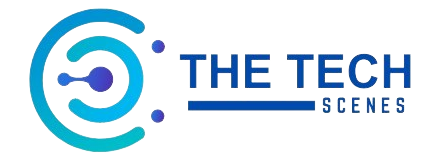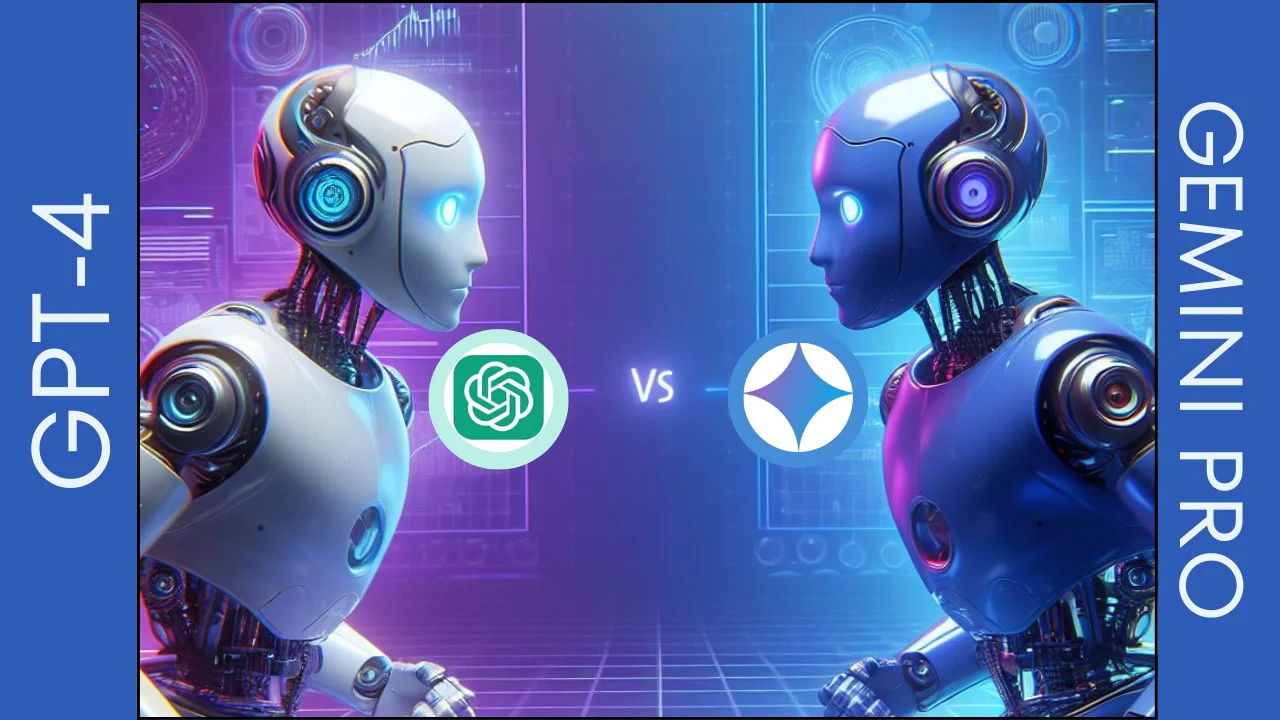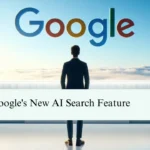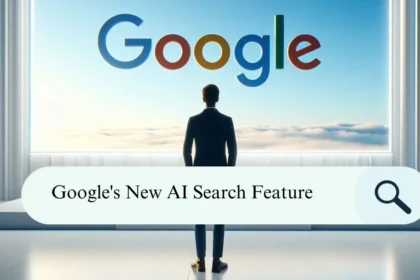In recent years, Artificial Intelligence (AI) has made big strides forward. Google’s Gemini Pro and OpenAI’s GPT-4 are two of the most important AI models. Among these advancements, two standout models have emerged: Google’s Gemini Pro and OpenAI’s GPT-4. These models have garnered attention for their remarkable capabilities and contributions to AI.
Gemini Pro vs GPT-4: which one is Better A Head-to-Head Analysis highlights how AI has played a pivotal role in driving these advancements, fundamentally transforming various industries and sectors. Their exceptional ability to comprehend and generate human-like text has opened up new avenues in natural language processing, content creation, sentiment analysis, and beyond. Harnessing vast amounts of data, LLMs such as Gemini Pro and GPT-4 have revolutionized the way we interact with AI-driven technologies.
This article delves into a comprehensive comparison between these two AI giants, Gemini Pro vs GPT-4: which one is Better A Head-to-Head Analysis, exploring their intricate features, diverse capabilities, and overall performance metrics. By conducting a detailed analysis, we aim to gain valuable insights into the strengths, weaknesses, and unique characteristics of each model.
Overview of Gemini Pro vs GPT 4: which one is Better A Head-to-Head Analysis
Gemini Pro is a part of Google’s Gemini family and is a multi-modal model. It balances model performance and speed and excels particularly in cross-modal reasoning. Unlike conventional models, Gemini Pro is multimodal, meaning it can process various forms of data including text, images, videos, and audio. This multimodal capability allows it to handle a wide range of tasks across different media formats, making it a highly adaptable and powerful tool in the realm of AI.
Notably, Gemini Pro is available in three distinct sizes: Nano, Pro, and Ultra, each tailored to specific needs and computational requirements. The Pro variant, in particular, is engineered to drive AI applications and tools effectively, catering to a diverse array of use cases.
Soon, Gemini Pro will be an option to power search summarization and answer generation features in Vertex AI, enhancing the quality, accuracy, and grounding abilities of search applications.
On the other hand…
GPT-4, is OpenAI’s most advanced system. It is a large multimodal model that accepts image and text inputs and generates text outputs. GPT-4 exhibits human-level performance on various professional and academic benchmarks. For example, it passes a simulated bar exam with a score around the top 10% of test takers.
GPT-4 is more creative and collaborative than ever before. It can generate, edit, and iterate with users on creative and technical writing tasks, such as composing songs, writing screenplays, or learning a user’s writing style. It can also accept images as inputs and generate captions, classifications, and analyses.
GPT-4 is capable of handling over 25,000 words of text, allowing for use cases like long-form content creation, extended conversations, and document search and analysis. It surpasses its predecessor, ChatGPT, in its advanced reasoning capabilities.
Both Gemini Pro and GPT-4 use large amounts of data for training, but they differ in the types of data and the training methods used.
Gemini Pro’s way of learning is a blend of two methods: supervised and unsupervised learning. Supervised learning involves giving the model labeled data so it can understand patterns already known. On the other hand, unsupervised learning lets Gemini Pro figure out hidden patterns by itself in data that isn’t labeled. This mix helps Gemini Pro become more adaptable and better at understanding lots of different information from various places.
The way Gemini Pro learns makes it good at learning many things and doing lots of different tasks well. It uses a mix of learning methods that include understanding text and code, which helps it grasp language and computer-related concepts. Also, it’s thought that Gemini Pro learns from many sources like social media, videos, and textbooks, which makes its knowledge broad and deep. This helps Gemini Pro work effectively in various situations and perform tasks confidently in many different areas.
On the other hand…
GPT-4 learns in two main steps: first, it learns on its own to understand patterns and create text without specific instructions. Then, it gets fine-tuned with a bit of guidance to improve its accuracy. Overall, it’s trained on a huge amount of data, about 13 trillion pieces of information that include both text and code. Some of this data comes from external sources like ScaleAI, while others are from within the organization. The data includes information gathered from CommonCrawl and RefinedWeb, which together add up to 13 trillion pieces of information.
1. Performance Comparison
Both Gemini Pro and GPT-4 showcase impressive strengths in their performance across various tasks. Gemini Pro stands out for its exceptional ability to handle vast amounts of data and comprehend intricate, multimodal information. This means it can understand not just text but also images, videos, and more complex data types.
In particular, Gemini Pro surpasses GPT-4 in tasks related to reasoning and math, demonstrating superior performance in these areas. Additionally, it outshines GPT-4 when it comes to generating code and solving complex problems, showcasing its versatility and proficiency in handling diverse challenges.
While GPT-4 brings its own set of strengths to the table. It excels in tasks like code generation, where it can efficiently create code snippets based on given inputs. Moreover, GPT-4 demonstrates a high level of competence in understanding images, making it valuable for applications that require image processing and analysis. In tasks that demand precision in language and visual comprehension, GPT-4 shows remarkable accuracy and efficacy.
Furthermore, GPT-4 has evolved to be more creative and collaborative, capable of not only generating but also editing and refining content in collaboration with users. This makes it a valuable tool for both creative writing tasks and technical content creation, allowing for seamless interaction and iterative improvements.
2. Architecture
The architecture of GPT-4 and Gemini Pro highlights their distinct approaches to learning and processing information.
GPT-4 relies on a transformer-based model, which is a type of architecture known for its ability to understand the context and meaning of words and sentences based on the relationships between them in a sequence. This sequential data processing enables GPT-4 to generate coherent and contextually relevant text outputs, making it proficient in tasks related to natural language understanding and generation.
While Gemini Pro adopts a larger and more inclusive architecture known as a multimodal model. This model not only processes text and images but also incorporates inputs from audio and video sources. By integrating these different types of data, Gemini Pro showcases a more holistic and comprehensive approach to learning and understanding information across multiple modalities.
This broader scope allows Gemini Pro to handle a wider range of tasks that involve different forms of media, making it highly adaptable and versatile in various applications such as content creation, multimedia processing, and communication.
3. Training Approach
The training approaches of GPT-4V and Gemini Pro show the worldly methods employed to enhance their learning capabilities.
GPT-4’s training regimen incorporates cutting-edge techniques like Reinforcement Learning from Human Feedback (RLHF). This means that during training, the model receives feedback from human input, which helps refine its output and responses, making them more accurate and contextually relevant. Additionally, GPT-4 utilizes loss prediction methods based on Power Law. This approach optimizes the training process by predicting and minimizing losses, thereby improving the efficiency and effectiveness of the learning process.
On the other hand, Gemini Pro undergoes training using Google’s tensor processing unit TPUv4. This processing unit is known for its exceptional computational power, enabling Gemini Pro to handle and process large volumes of data simultaneously. The TPUv4’s capability to process extensive amounts of data in parallel allows Gemini Pro to gain deeper insights and understanding from the training data, enhancing its ability to perform complex tasks and generate accurate outputs.
4. Training Datasets
GPT-4V learns from a variety of sources that include images from the internet, along with information from books, articles, and computer code. This diverse mix of data helps GPT-4V understand different aspects of language and visual information.
In contrast, Gemini Pro’s training dataset is even more diverse. It includes not only text-based information from web documents, books, and code but also multimedia content such as images, audio clips, and videos. This means that Gemini Pro learns from a wide range of sources and can process information in multiple languages and formats, making it highly adaptable and capable of handling complex and varied tasks.
5. Performance
In terms of how effectively they can do their jobs, GPT-4V and Gemini Pro have unique strengths.
GPT-4V has improved a lot in tasks where it needs to understand and work with pictures. It’s also gotten better at giving accurate answers and making sure it doesn’t say anything wrong or inappropriate.
On the other hand, Gemini Pro shines when it comes to understanding complex scientific and mathematical information. It’s so good that it can perform as well as human experts in understanding languages and their nuances. This means it can comprehend and process languages in a way that’s very close to how humans do it.
6. Applications in Education
Both GPT-4 and Gemini Pro are being used in education for various purposes, showing how useful they can be in improving learning experiences and advancing educational tools.
One of their main applications is enhancing user experience, making it easier for students and teachers to interact with educational content. They are also used for creating new and engaging educational materials, such as textbooks, quizzes, and tutorials. Additionally, these models are utilized for language translation tasks, helping students learn and understand content in different languages more effectively.
Furthermore, GPT-4 and Gemini Pro contribute to educational advancements by enabling personalized learning experiences, where content can be tailored to individual student needs and learning styles. They also assist in data analysis and decision-making processes within educational institutions, aiding educators in assessing student performance and designing targeted interventions.
Overall, the integration of GPT-4 and Gemini Pro into education showcases their versatility and potential to drive innovation and improvements in teaching and learning practices.
7. Safety
Safety is a big deal for both OpenAI and Google when it comes to developing AI. They pay close attention to making sure that their AI systems are safe and don’t cause any harm. One important aspect of safety is reducing biases, which means making sure that the AI doesn’t favor or discriminate against certain groups of people. They also work hard to lessen any risks that might come up when people interact with AI systems, making sure that Artificial intelligence plays a vital role in the future and responsibly and ethically in different situations.
8. Customization and Use Cases
When it comes to customizing the way they work, there are differences between GPT-4 and Gemini Pro. GPT-4 has limited options for customization, meaning there are only a few ways you can adjust or change how it operates. On the other hand, Gemini Pro doesn’t offer any customization options at all, which means you can’t tweak its settings or functions.
Despite these differences, both GPT-4 and Gemini Pro are versatile in terms of the types of data they can handle. They are capable of processing various forms of data, including images, text, code, videos, and audio. This versatility allows them to be used in a wide range of applications that involve different types of information.
Gemini Pro is particularly well-suited for tasks that require deep and contextual insights across large volumes of data. Its ability to understand complex information in detail makes it ideal for applications where in-depth analysis and understanding are crucial.
On the other hand, GPT-4 shines in generating different formats of text and is more suitable for tasks that demand high precision in language understanding and visual comprehension. Its strength lies in its ability to create coherent and contextually relevant text outputs, making it valuable for tasks that require accurate language processing.
Is Gemini better than chatgpt?
Deciding between Gemini Pro and ChatGPT 4 depends on your specific needs. Here’s an analysis:
- Reasoning and Factual Accuracy: Gemini, especially the Ultra version, excels in tasks that require understanding and logic. Benchmarks show it surpassing human experts in these areas.
- Information Retrieval: Both are adept, but Gemini integrates directly with Google Search and other resources, potentially giving it an edge for real-time information retrieval.
- Creative Writing: While Gemini can be creative, ChatGPT is generally considered stronger for open-ended content generation like poems or stories.
- Code Generation: Gemini shows promise, particularly in understanding and completing code.
- Accessibility: ChatGPT has a wider range of access options, while Gemini is currently more limited.
- Focus: Gemini prioritizes responsible AI and integrates well with Google Workspace. ChatGPT offers more established multimodal content production features.
Ultimately, if you prioritize factual tasks, reasoning, and tight integration with Google tools, Gemini might be the better fit. If creative freedom and broader content generation are your focus, ChatGPT might be a better choice.
Conclusion
In summary, Gemini Pro and GPT-4 each have their special abilities that make them useful in different ways. Gemini Pro is good at handling big sets of data and understanding lots of different types of information like pictures, sounds, and text all mixed. On the other hand, GPT-4 is great at tasks that need creative and technical writing skills.
Deciding which one to use depends on what you need to do. If you’re working with lots of complex data and need to understand it deeply, Gemini Pro might be the better choice. But if you’re focusing on writing tasks that need creativity and technical accuracy, then GPT-4 would be more suitable. It all comes down to what you want to achieve and what tasks you need the AI to help with.
FAQs
1. Is Gemini Pro better than ChatGPT 4?
When comparing Gemini Pro and ChatGPT, which one comes out on top? While Google has faced challenges in gaining as much recognition as OpenAI’s highly popular ChatGPT, Gemini Ultra has demonstrated superior performance in 30 out of 32 academic benchmarks related to reasoning and understanding that were tested.
2. Can Gemini compete with ChatGPT?
The basic version of Gemini outperforms the basic version of ChatGPT. However, the advanced version of Gemini is only marginally superior to ChatGPT Plus. Gemini provides a more enhanced user experience, offering more visual elements and links to websites. Additionally, Gemini Advanced produces better AI-generated images compared to ChatGPT Plus.
3. Is Gemini better than Bard?
Google’s AI has changed with Gemini coming in, giving a big improvement over Bard. While Bard is good for simple things, Gemini stands out in harder tasks, connecting to the real world, and understanding things deeply.











